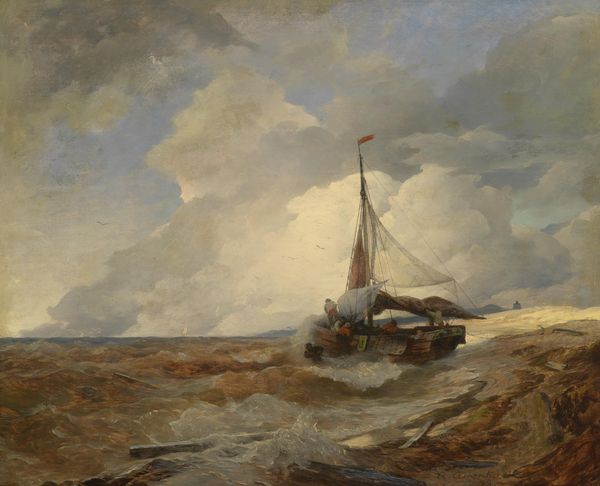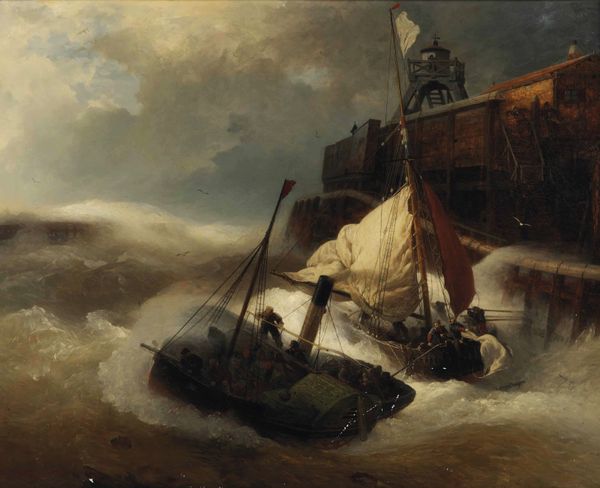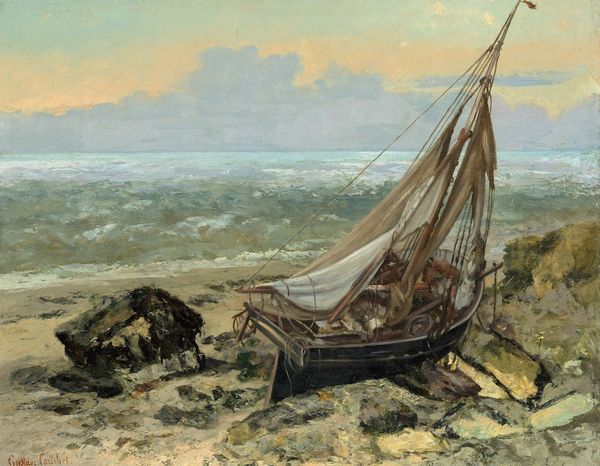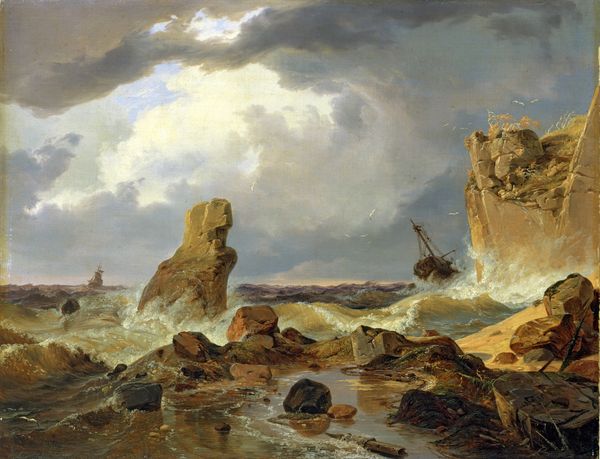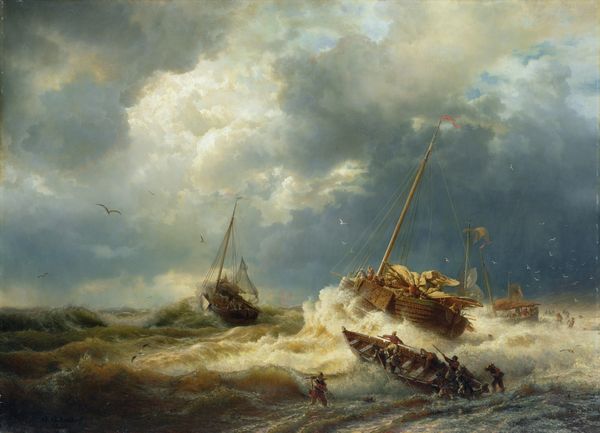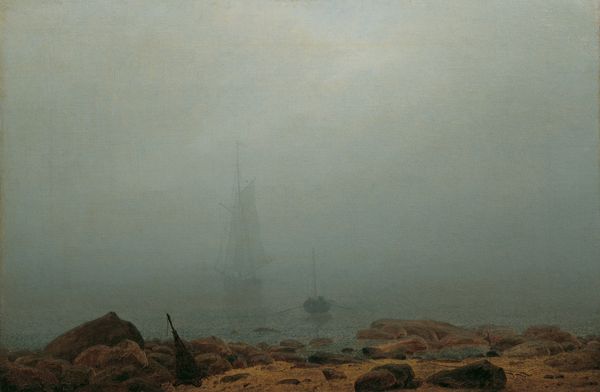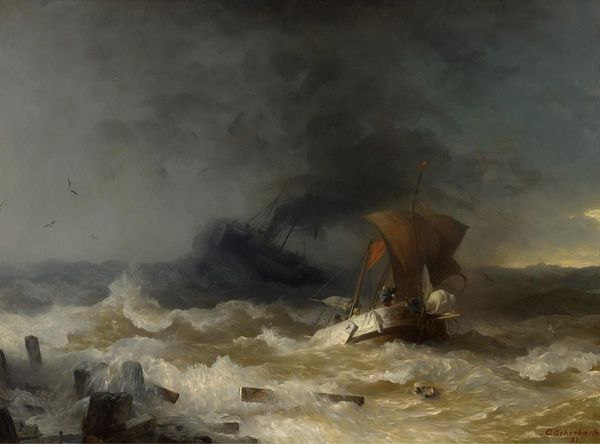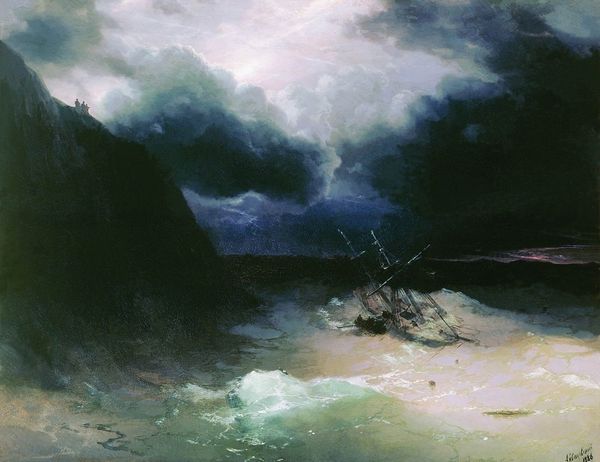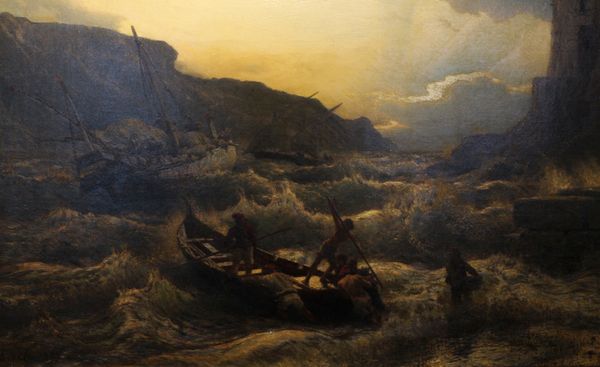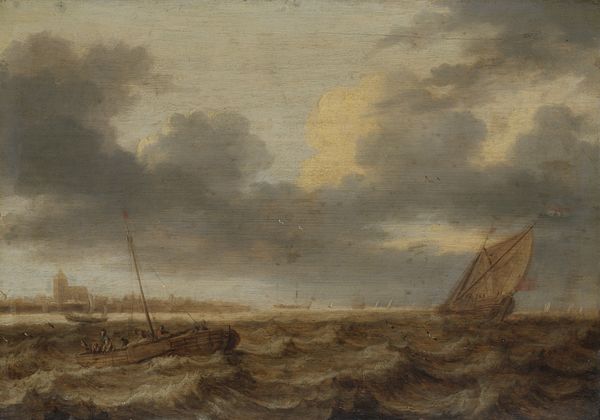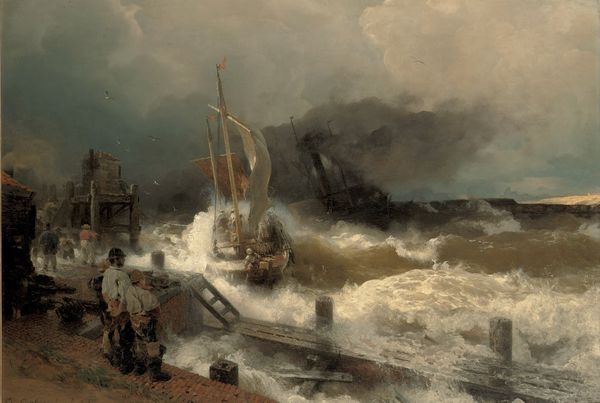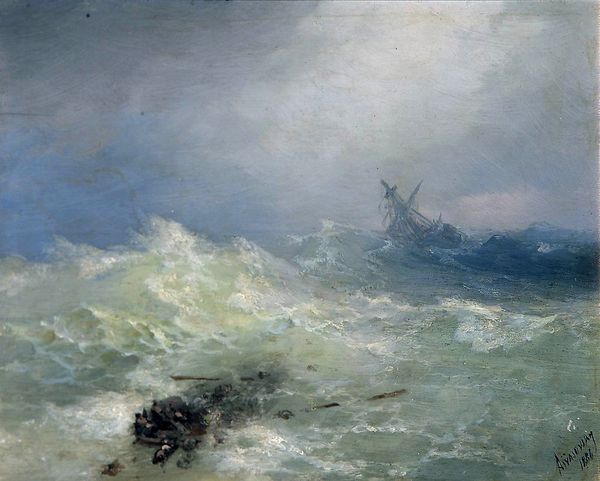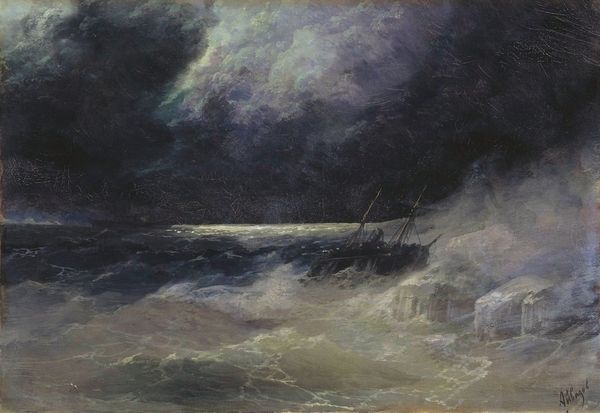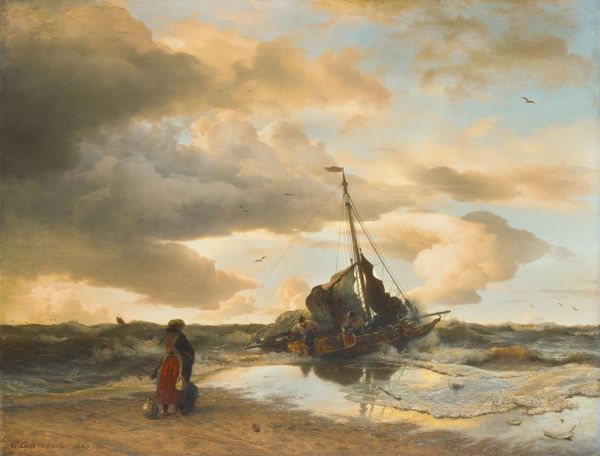
oil-paint
#
oil-paint
#
landscape
#
charcoal drawing
#
oil painting
#
romanticism
#
history-painting
#
charcoal
#
watercolor
#
realism
Dimensions: 22.2 cm (height) x 30.8 cm (width) (Netto), 41.8 cm (height) x 50.2 cm (width) x 9 cm (depth) (Brutto)
Editor: Caspar David Friedrich's "After the Storm," painted in 1817, presents a stark image rendered in oil paint. I'm immediately struck by the overwhelming feeling of desolation and the dynamic interplay between the remnants of the wrecked ship and the turbulent sea. What formal elements contribute to the powerful emotions this work evokes? Curator: Notice first how Friedrich orchestrates a dichotomy of form, positioning the fragmented vessel against the implied, continuous horizon line. This immediately establishes a tension. The textures are also crucial: the rough impasto of the waves contrasts significantly with the smoother gradations in the sky. How does this juxtaposition of textures affect your perception of space and depth within the composition? Editor: The roughness of the sea and the broken ship, placed against the smooth sky, create an opposition, and that gives it depth. So it’s not just what is depicted, but the rendering itself that creates the emotional impact? Curator: Precisely. The formal construction and the very application of paint amplify the thematic content. Furthermore, examine the muted color palette, primarily consisting of greys and browns. This restrained use of color serves to further accentuate the somber atmosphere. Have you considered the significance of light in relation to the overall composition? Editor: It’s definitely subdued. The limited palette emphasizes the stark forms and the dominance of greys certainly adds to that desolate mood we felt at the start. It really focuses attention on the shapes and textures themselves, more than on color. Thank you! Curator: It’s through such attentive observation of formal relationships and qualities that one may truly decode and appreciate the evocative power of Friedrich's "After the Storm." The painting exemplifies how art speaks through structural means as well as through symbols.
Comments
statensmuseumforkunst almost 2 years ago
⋮
A violent storm has brought a ship off course, smashing it onto the rocks. But perhaps the rocks are also its salvation, embedding it on firm ground. Friedrich grew up in Greifswald near the Baltic Sea, and he visited the nearby island of Rügen all his life. Here he observed the sky and sea in all weathers, and ships at sea was a recurring theme in his art, often symbolising the journey of life. Perhaps this scene shows the firm bedrock of faith saving the ship. The dramatic, finely nuanced depiction of the stormy sky testifies to how Friedrich, like many other European painters, was keenly interested in exploring cloud formations in various weather and lighting conditions. He has very carefully portrayed the sunlight piercing the clouds and details such as the gulls, the partially broken mast, the fluttering ropes and the rain falling out at sea.
Join the conversation
Join millions of artists and users on Artera today and experience the ultimate creative platform.
